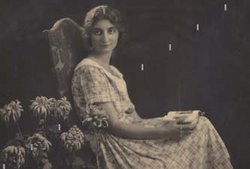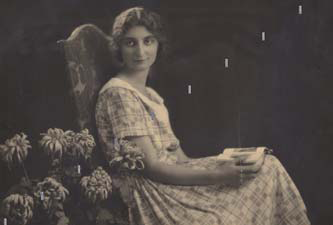The German occupation, however, affected her greatly. In 1942, Spaak reported to the underground National Movement Against Racism (MNCR) and offered her assistance. In an article in her memory, published in 1945 in the Yiddish newspaper Naie Press, B. Aronson, who was active in MNCR, wrote that he and his colleagues had doubted their new member's ability to help but quickly realized that they had misjudged her. When she joined them, Spaak said, "Tell me what to do . . . so I'll know that I am serving in the struggle against Nazism."
Suzanne did not flinch from any assignment; she walked the length and breadth of Paris to find a hospital willing to accept ailing Jews hiding under assumed names. When necessary, she used her standing in "high society," and knocked on the doors of clerics, judges, and authors, reminding them of their duty to act against persecution of Jews and opponents of the regime. In other cases, Spaak functioned as a simple underground operative and typed up and distributed leaflets.
She was given a position in the "Red Orchestra" intelligence network and devised daring solutions to intelligence agents' problems. She was specially drawn to saving the lives of Jewish children at risk of deportation.
In early 1943, information concerning preparations for the deportation of Jewish children in UGIF centers became known. Spaak was an active participant in an operation initiated by Pastor Paul Vergara and Marcelle Guillemot that smuggled more than sixty children to safety.
Suzanne sheltered some of the children in her home until they were all taken to Paris and various villages to people willing to shelter them. With her comrades' help, Spaak, at great personal risk, provided the children with ration cards and clothing.
She worked diligently to save the lives of as many Jewish children who ran the risk of being deported to concentration camps, scattered across Western Europe. At a risk to herself and her family, Suzanne hid some of the children in her own house, feeding and clothing them.
In 1942 in Belgium, the Nazis arrested more than 600 members of the Red Orchestra, one of which was Suzanne Spaak. She was sent to Fresnes prison in 1942 where she was held in horrific conditions and tortured.
Before she was incarcerated, however, she gave the lists of Jewish children and their addresses to an underground comrade, thus saving the children.
On August 12, 1944, within a week of the liberation of Paris, Suzanne was executed by the Germans.
On April 21, 1985, Yad Vashem recognized Suzanne Spaak as Righteous among the Nations.
The German occupation, however, affected her greatly. In 1942, Spaak reported to the underground National Movement Against Racism (MNCR) and offered her assistance. In an article in her memory, published in 1945 in the Yiddish newspaper Naie Press, B. Aronson, who was active in MNCR, wrote that he and his colleagues had doubted their new member's ability to help but quickly realized that they had misjudged her. When she joined them, Spaak said, "Tell me what to do . . . so I'll know that I am serving in the struggle against Nazism."
Suzanne did not flinch from any assignment; she walked the length and breadth of Paris to find a hospital willing to accept ailing Jews hiding under assumed names. When necessary, she used her standing in "high society," and knocked on the doors of clerics, judges, and authors, reminding them of their duty to act against persecution of Jews and opponents of the regime. In other cases, Spaak functioned as a simple underground operative and typed up and distributed leaflets.
She was given a position in the "Red Orchestra" intelligence network and devised daring solutions to intelligence agents' problems. She was specially drawn to saving the lives of Jewish children at risk of deportation.
In early 1943, information concerning preparations for the deportation of Jewish children in UGIF centers became known. Spaak was an active participant in an operation initiated by Pastor Paul Vergara and Marcelle Guillemot that smuggled more than sixty children to safety.
Suzanne sheltered some of the children in her home until they were all taken to Paris and various villages to people willing to shelter them. With her comrades' help, Spaak, at great personal risk, provided the children with ration cards and clothing.
She worked diligently to save the lives of as many Jewish children who ran the risk of being deported to concentration camps, scattered across Western Europe. At a risk to herself and her family, Suzanne hid some of the children in her own house, feeding and clothing them.
In 1942 in Belgium, the Nazis arrested more than 600 members of the Red Orchestra, one of which was Suzanne Spaak. She was sent to Fresnes prison in 1942 where she was held in horrific conditions and tortured.
Before she was incarcerated, however, she gave the lists of Jewish children and their addresses to an underground comrade, thus saving the children.
On August 12, 1944, within a week of the liberation of Paris, Suzanne was executed by the Germans.
On April 21, 1985, Yad Vashem recognized Suzanne Spaak as Righteous among the Nations.


